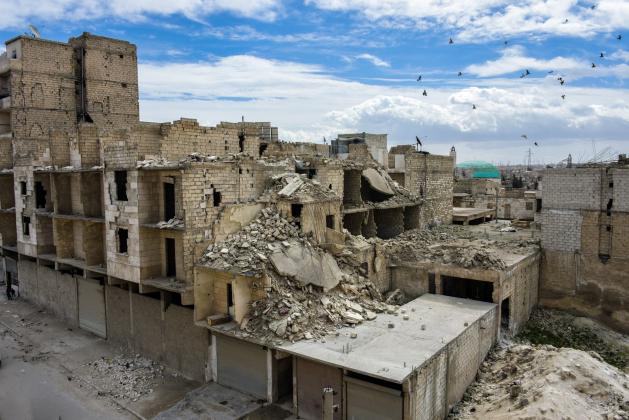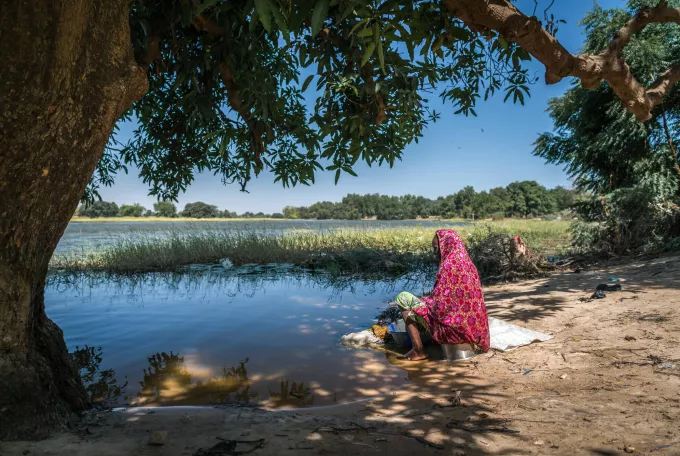Download Resources - English
Humanitarian Access Working Group Toolkit
3: Analysing, monitoring and reporting

A Humanitarian Access Working Group's (HAWGs) understanding of the situation in which it is operating is crucial to ensure it focuses on the most pressing issues. It is also helpful in providing an evidence base to inform negotiations and advocacy.
In a coordination setting three main structured activities are conducted as the basis for an HAWG’s contextual understanding:
- Stakeholder mapping and analysis
- Access incident monitoring and reporting
- Access severity mapping
There are other analysis activities and tools, but these are less commonly used in an HAWG setting.
Access severity mapping and access incident monitoring and reporting are largely considered OCHA-led activities which would often happen even in the absence of an HAWG. A working group, however, can inform the methodologies for such activities and support their implementation.
Despite their essential support in building a shared understanding of a situation, these activities regularly face challenges from their design through to implementation and the dissemination and use of the information they generate. A non-governmental organisation (NGO) co-chair should seek to play a constructive supporting role.
Contextual understanding is also heavily informed by the routine day-to-day work of meetings, bi-laterals and informal discussions. These are vitally important, particularly in faster moving environments, but they should be backed up by structured, methodologically sound activities.
Stakeholder mapping and analysis
What is it?
Stakeholder mapping and analysis identifies all actors with influence over humanitarian access, both organisations and individuals. It aims to understand their interests and influence, the power dynamics between actors, who key interlocutors are and what the best entry points might be.
Why is it important?
Stakeholder mapping and analysis is a key enabling activity for improving humanitarian access and is relevant to the entire humanitarian community. The information it generates is crucial to inform engagement strategies and tactics. Without the activity, an HAWG’s leadership and members will already have a base-level understanding of key interlocutors, but a structured activity is likely to reveal more detailed and nuanced information.
Role of co-chairs and members
Co-chairs should be responsible for articulating a methodology and organising any workshops used to generate the information.
Members potentially have a more important role to play by actively participating in the workshops and offering information on the key stakeholders.
It is also worth considering involving experts from outside the HAWG membership, such as researchers and frontline negotiators who have specific expertise or who are generally more versed in the stakeholder landscape.
Guidance
Despite its importance, it tends to be difficult to secure buy-in and participation for a collective actor mapping and analysis. This is often rooted in HAWG members deeming the information required too sensitive to share openly. They may also be concerned that they might decrease their competitive advantage over other humanitarian organisations by sharing valuable insights that support their individual negotiations. It can also be driven by calculations of the cost-benefit of mapping stakeholders whose leadership is constantly in flux.
Such concerns are understandable, particularly in situations where groups or individuals might be sanctioned or difficult to engage with, and information relating to that actor might have been hard-won over years of engagement.
One way to approach this issue is not to undertake the exercise with the entire HAWG membership. Co-chairs may want to form a separate “taskforce” of interested members. It is also often helpful to generate a terms of reference (ToR) for the activity to clarify who is participating, how the information will be gathered and how it will be used. reference
It is likely that the final product, or at least the most sensitive version, will not be shared with the whole HAWG membership or the broader humanitarian community. Making this clear can be one way of encouraging organisations to participate.
Access incident monitoring and access snapshots
What is it?
OCHA’s access monitoring and reporting framework (AMRF) is the most common collective tool found in humanitarian settings. It is considered an OCHA tool, but HAWG co-chairs and members can, if needed or requested, play a role in its design and implementation in a specific situation.
Access snapshots are overviews of the access environment based on incident reporting, which draw partly on reports submitted through the ARMF. Snapshots too are considered OCHA’s remit to produce, but an HAWG may contribute if needed.
OCHA’s Minimum Package of Services Manual contains more information on both activities.
Why is it important?
Both tools serve important purposes. The AMRF offers a systematic way to generate an evidence base to inform access priorities, and access snapshots can be a useful tool for advocacy with the Humanitarian Country Team (HCT), donors and external stakeholders.
Role of co-chairs and members
Co-chairs can promote the AMRF in coordination forums, meetings and visits to project locations. They will often have partners report or discuss access issues with them, and they should use such opportunities to remind partners of the importance of reporting directly into the AMRF. It can be easier to get NGO partners to report into the system if the NGO co-chair is one of the people requesting it. OCHA is usually the secretariat of an HAWG, but the NGO co-chair will take on secretariat functions as well.
In the absence of an AMRF, the NGO co-chair and members should call on OCHA to roll out the tool.
Guidance
Lack of reporting is a significant issue and affects the AMRF’s implementation. It may be considered an OCHA tool, but it relies on others to succeed.
A number of issues lie behind the lack of reporting. They include failure to include potential contributors in the design and roll out of the framework, a lack of understanding of what the reporting is used for and its impact, and a potential perception that confidential details will be shared with external parties that might jeopardise access.
Reporting tools used by other organisations may also contribute to the AMRF being under-used.
For partners in the wider humanitarian community, efforts should be made to ensure they understand what the tool is and what should be reported. Even for partners well versed in humanitarian access it might not always be clear when something such as a regular bureaucratic process qualifies as a constraint.
Despite its prevalence across large numbers of humanitarian responses, it cannot be taken for granted that the AMRF is understood. Awareness-raising sessions could be organised via NGO forums, groups of country directors or other coordination platforms.
In the rush to roll out an incident monitoring tool, its design may not always be user friendly, which will affect organisations’ willingness to report into it.
Before launching a tool it should be tested with the NGOs whose reporting will inform it. This might take some time, but it is better than launching a tool that humanitarians will not use.
In situations where reporting into the AMRF is poor, it is possible that the snapshot’s narrative will not reflect the access landscape as HAWG members see it. In this scenario, HAWG members or the NGO co-chair might play a role in reviewing the narrative before it is published to ensure it reflects their experiences.
In situations where OCHA’s capacity is extremely constrained, an NGO co-chair might take on responsibility for drafting the narrative, based on an anonymised summary of the AMRF’s reports compiled by OCHA.
In some situations, a particular access barrier, such as a bureaucratic or administrative impediment (BAI), might pose such an obstacle that an HAWG may consider setting up a dedicated monitoring and reporting system. This could be a way to focus members’ attention, but it can also lead to the duplication of efforts.
Before embarking on setting up separate systems, an HAWG should assess whether the AMRF could potentially serve the same function with adjustments. Given that an NGO co-chair will rarely have access to AMRF reports, can an arrangement be made to access those pertaining to a specific impediment with the consent of all involved?
The AMRF is a regular feature of humanitarian responses and should not be eschewed in favour of another system without careful consideration, despite its inherent challenges.
Access severity mapping
What is it?
OCHA-led access severity mapping exercise complements access incident tracking by providing a more in-depth analysis of the severity of access constraints across a country or operational area. This analysis is often then overlaid with other relevant data like people in need figures, where organisations are providing assistance, or malnutrition severity figures for example.
The data collection often consists of two steps, preliminary collection of existing data which is then complemented by focus group discussions which might consist of various humanitarian actors, civil society and affected populations.
This analysis is often transformed into maps and alongside a summary of the access environment. See an example from Syria below and here.
Sometimes these products will be made public but often they will remain private. More information can be found in the OCHA Minimum Package of Services.

Why is it important?
The document can provide an useful overview of an access environment which can be useful for advocacy and engagement purposes and to inform choices about where to provide assistance.
Both tools serve important purposes. The AMRF offers a systematic way to generate an evidence base to inform access priorities, and access snapshots can be a useful tool for advocacy with the HCT, donors and external stakeholders.
Role of co-chairs and members
While considered an OCHA exercise, NGO co-chairs and members might be called upon to advise and comment on the severity mapping methodology, the composition of the focus groups and the final outputs, especially in context’s where OCHA is struggling with human resources capacity.
NGO co-chairs and members might also call on OCHA to revise the methodology if they see that previous iterations of the methodology did not accurately reflect the access environment as seen by an HAWG’s membership base.
In some cases a steering committee might be established to provide guidance on the process. An NGO co-chair and HAWG members might be good candidates for such bodies.
Guidance
It is important that at the beginning of the severity mapping process there is clarity among HAWG members and both co-chairs about what role the group and the NGO co-chair will play in the process and what level of input they will have into both the methodology and the final output. A lack of shared clarity on this can lead to frustration later in the process. Ideally, all these roles and responsibilities and the methodology will be documented and adhered to.
HAWG members should seek to participate in any focus group discussions that are conducted as part of the process to help ensure their perspectives are incorporated.
Ideally, the HAWG will also have the ability to feedback on the final output – both the narrative and maps produced.
In devising the methodology it is important to ensure there is a diversified range of inputs. There can sometimes be a tendency for UN agencies and international NGOs to dominate the inputs so it is important HAWG members push for national and local NGOs to be included.
The scale of the access severity mapping exercise can often mean that there it is not feasible to assess very localised access conditions which would be of more operational value to humanitarian actors. As such, the final outputs can often be more of useful for advocacy purposes, rather than operational planning purposes.
